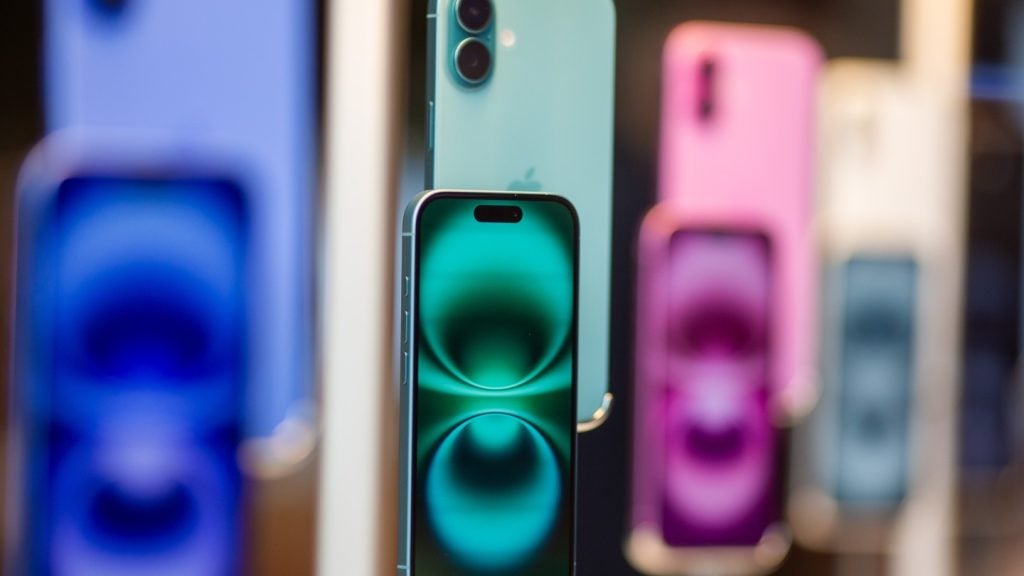The technology industry continues to be a hotbed of patent innovation. Activity is driven by the increasing need for secure communication in sectors such as finance, defense, and healthcare, as well as advancements in quantum technologies, and the growing importance of technologies such as quantum key distribution (QKD) systems, quantum repeaters, and quantum encryption protocols. These technologies have the potential to revolutionize secure communication by providing unprecedented levels of data protection and confidentiality. In the last three years alone, there have been over 1.5 million patents filed and granted in the technology industry, according to GlobalData’s report on Quantum computing in technology: photonic quantum communication. Buy the report here.
According to GlobalData’s Technology Foresights, which uses over 1.6 million patents to analyze innovation intensity for the technology industry, there are 185+ innovation areas that will shape the future of the industry.
Photonic quantum communication is a key innovation area in quantum computing
Photonic quantum communication is an advanced method of secure information exchange using photons based on the principles of quantum mechanics. By leveraging the properties of quantum particles, it enables encryption and transmission of data in a highly secure manner, protecting against interception and tampering. This technology is rapidly advancing and holds promising applications in secure financial transactions, military communications, and data storage, ensuring the confidentiality and integrity of sensitive information.
GlobalData’s analysis also uncovers the companies at the forefront of each innovation area and assesses the potential reach and impact of their patenting activity across different applications and geographies. According to GlobalData, there are 455+ companies, spanning technology vendors, established technology companies, and up-and-coming start-ups engaged in the development and application of photonic quantum communication.
Key players in photonic quantum communication – a disruptive innovation in the technology industry
‘Application diversity’ measures the number of applications identified for each patent. It broadly splits companies into either ‘niche’ or ‘diversified’ innovators.
‘Geographic reach’ refers to the number of countries each patent is registered in. It reflects the breadth of geographic application intended, ranging from ‘global’ to ‘local’.
Patent volumes related to photonic quantum communication
| Company | Total patents (2010 - 2022) | Premium intelligence on the world's largest companies |
| NARI Group | 17 | Unlock Company Profile |
| AT&T | 49 | Unlock Company Profile |
| China Electronics Technology Group | 67 | Unlock Company Profile |
| Corning | 87 | Unlock Company Profile |
| Alibaba Group | 23 | Unlock Company Profile |
| State Grid Corporation of China | 79 | Unlock Company Profile |
| State Grid Information and Telecommunication | 20 | Unlock Company Profile |
| Hitachi | 23 | Unlock Company Profile |
| Japan Science and Technology Agency | 16 | Unlock Company Profile |
| Northrop Grumman | 18 | Unlock Company Profile |
| Mitsubishi Electric | 32 | Unlock Company Profile |
| Nokia | 123 | Unlock Company Profile |
| ELMOS Semiconductor | 114 | Unlock Company Profile |
| Raytheon Technologies | 33 | Unlock Company Profile |
| Telefonaktiebolaget LM Ericsson | 19 | Unlock Company Profile |
| Nippon Telegraph and Telephone | 13 | Unlock Company Profile |
| Oki Electric Industry | 28 | Unlock Company Profile |
| Boeing | 30 | Unlock Company Profile |
| IBM | 112 | Unlock Company Profile |
| Honeywell International | 27 | Unlock Company Profile |
| KT | 21 | Unlock Company Profile |
| SK Telecom | 83 | Unlock Company Profile |
| BT Group | 65 | Unlock Company Profile |
| Toshiba | 314 | Unlock Company Profile |
| NEC | 62 | Unlock Company Profile |
| MagiQ Technologies | 20 | Unlock Company Profile |
| IonQ | 24 | Unlock Company Profile |
| X Development | 17 | Unlock Company Profile |
| PsiQuantum | 51 | Unlock Company Profile |
| QuantumCTek | 120 | Unlock Company Profile |
| Qubitekk | 19 | Unlock Company Profile |
| ColdQuanta | 16 | Unlock Company Profile |
| Arqit | 55 | Unlock Company Profile |
Source: GlobalData Patent Analytics
Toshiba is the leading patent filer in photonic quantum communication space. One of the company’s patents helps understand a component of a quantum communication system which consists of an input section with multiple waveguides and a decoder section with multiple decoders. The input and decoder sections are integrated on a single substrate, allowing continuous and interconnected waveguides. The waveguides in the input section direct light pulses to the waveguides of the decoder section, enabling parallel operation of the decoders.
Other prominent patent filers in the space include Huawei and International Business Machines (IBM).
By geographic reach, Alphabet leads the pack, followed by ELMOS Semiconductor and IonQ. In terms of application diversity, Toshiba holds the top position, followed by Nokia and Coring.
Photonic quantum communication offers highly secure and tamper-proof communication channels. By utilizing the principles of quantum mechanics, photonic quantum communication enables the transmission of information in a way that is resistant to interception and manipulation. This technology holds great promise for applications requiring secure data transmission, such as secure financial transactions, military communications, and data storage. It has the potential to revolutionize the field of communication and enhance the security of sensitive information.
To further understand the key themes and technologies disrupting the technology industry, access GlobalData’s latest thematic research report on Quantum Computing.
Data Insights
From

The gold standard of business intelligence.
Blending expert knowledge with cutting-edge technology, GlobalData’s unrivalled proprietary data will enable you to decode what’s happening in your market. You can make better informed decisions and gain a future-proof advantage over your competitors.







